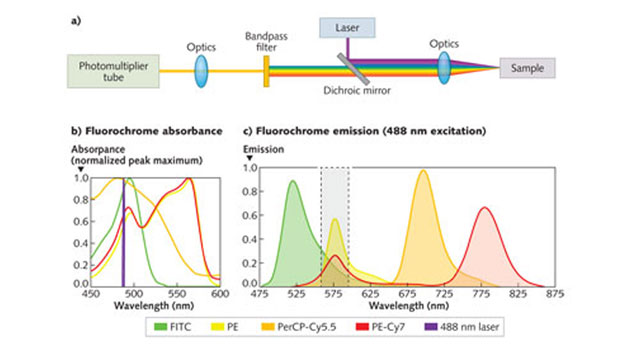Optics for Biophotonics: Multivariate Optical Elements Beat Bandpass Filters in Fluorescence Analysis
Life science assays such as flow cytometry, tissue staining, polymerase chain reaction, and enzyme-linked immunosorbent assays (ELISA) use fluorescent tagging or labeling techniques with fluorochromes, dyes, or quantum dots as the mechanism for analyte detection or discrimination. Commercially available antibodies directly conjugated to highly purified fluorochromes offer a wide variety of target specificities and color options, with the success of a multiparameter fluorescent assay fundamentally dependent on the selection of fluorescent labels.
The optical subsystem for detecting the fluorescent labels is basically a filter photometer in which an excitation light source-laser or light-emitting diode (LED)—induces fluorescence of the taggant molecules at the sample. Fluorescence signals are collected by relay optics, passed through optical bandpass filters, and ultimately detected by a photodiode or photomultiplier tube.
To measure multiple parameters (colors) simultaneously, an optimization of light source and emission optical bandpass filter(s) is performed, where the bandpass filter for each target fluorochrome captures a high level of emitted photons at the primary detector for the target while minimizing the contribution of overlapping emission into the secondary or “spillover” detectors. Unfortunately, this spectral overlap presents problems when using a filter-based analysis system. An alternative fluorescence assay technique using multivariate optical elements can improve upon traditional bandpass filter implementations without the expense of full spectrometer-based analysis.
Full article by Ryan J. Priore, Chief Technology Officer, Cirtemo




























































































































































